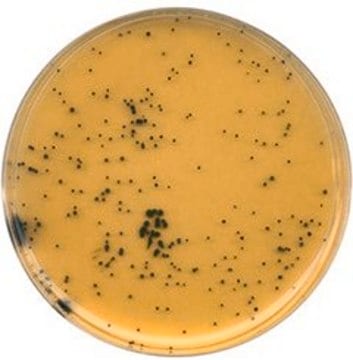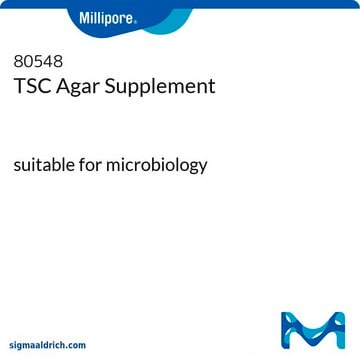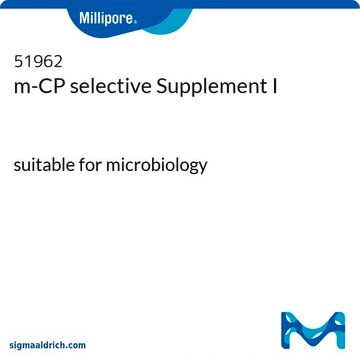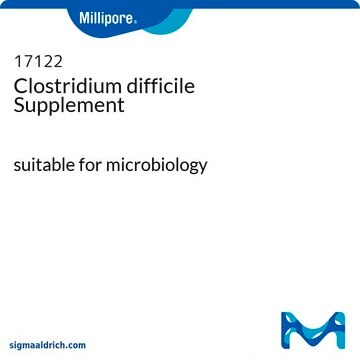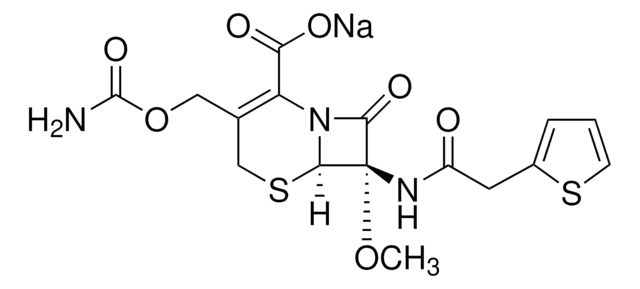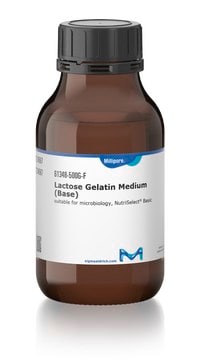30020
D-Cycloserine
Synonyme(s) :
R-4-Amino-3-isoxazolidinone, (R)-4-Amino-3-isoxazolidone, 4-Amino-3-isoxazolidinone
About This Item
Produits recommandés
Source biologique
synthetic
Niveau de qualité
Forme
powder
Puissance
≥900 μg per mg
Couleur
white to off-white
Pf
147 °C (dec.) (lit.)
Spectre d'activité de l'antibiotique
Gram-negative bacteria
Gram-positive bacteria
mycobacteria
Mode d’action
cell wall synthesis | interferes
Température de stockage
−20°C
Chaîne SMILES
N[C@@H]1CONC1=O
InChI
1S/C3H6N2O2/c4-2-1-7-5-3(2)6/h2H,1,4H2,(H,5,6)/t2-/m1/s1
Clé InChI
DYDCUQKUCUHJBH-UWTATZPHSA-N
Vous recherchez des produits similaires ? Visite Guide de comparaison des produits
Catégories apparentées
Description générale
Application
Actions biochimiques/physiologiques
Partial agonist at the glycine modulatory site of NMDA glutamatergic receptors; antibiotic against Gram-negative bacteria.
Mode of Resistance: D-Ala transport interference.
Conditionnement
Autres remarques
Code de la classe de stockage
11 - Combustible Solids
Classe de danger pour l'eau (WGK)
WGK 2
Point d'éclair (°F)
Not applicable
Point d'éclair (°C)
Not applicable
Équipement de protection individuelle
Eyeshields, Gloves, type N95 (US)
Certificats d'analyse (COA)
Recherchez un Certificats d'analyse (COA) en saisissant le numéro de lot du produit. Les numéros de lot figurent sur l'étiquette du produit après les mots "Lot" ou "Batch".
Déjà en possession de ce produit ?
Retrouvez la documentation relative aux produits que vous avez récemment achetés dans la Bibliothèque de documents.
Les clients ont également consulté
Notre équipe de scientifiques dispose d'une expérience dans tous les secteurs de la recherche, notamment en sciences de la vie, science des matériaux, synthèse chimique, chromatographie, analyse et dans de nombreux autres domaines..
Contacter notre Service technique
